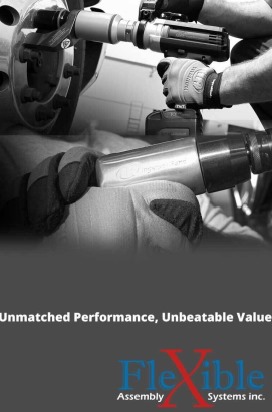Why Every Quality-Control Department Needs Both Torque Testers and Torque Screwdrivers
A loose fastener can compromise a product. A overtightened joint may crack parts. Each error carries a cost. You aim for precise torque at every step. A torque tester serves as your final check. A torque screwdriver enforces the correct force at the assembly line. Combined they form a quality shield. This post explains why you need both tools in your quality-control kit.
The Role of Torque in Quality-Control
Torque defines the twist force on a bolt or screw. When you hit the right torque value you secure parts without damage. A mismatch here leads to failures on the shop floor or returns from the field. You must track torque at two points: final audit and active assembly.
Hitting torque targets brings benefits:
-
Safe product life
-
Consistent build quality
-
Lower scrap rate
-
Compliance with industry norms
Each supply chain step relies on precise torque. A gap at any point may end in defect. You avoid it by pairing tools that test and tools that apply torque.
The Risk of Torque Error
Imagine a brake line clamp held by a single screw. Undertight here invites fluid leak. Overtight leads to thread pullout. A passenger rides in harm’s way. Similar risks appear in medical gear and in electronics. Torque error exposes your brand to liability and repair cost.
Real cost examples:
-
An OEM faced $50,000 in recalls after bolt cracks
-
A device maker lost two weeks of production time over a single fastener defect
-
An electronics firm saw 10 percent scrap rate rise after tool drift
Those hits erode your profit margin. A robust plan must include correct torque audit and precise force delivery.
How Precision Tools Prevent Waste?
A torque tester verifies torque output of your drivers. It isolates worn tools before they slip. A well tuned tester flags drift early. You cut down on rework and scrap. At the same time a torque screwdriver locks onto each torque spec at assembly. You avoid operator guesswork. You prevent one-piece build errors that slip past the line.
Torque Testers: A Must-Have for Final Check
A torque tester sits in your audit lab. You use it on sharpened batches of drivers to confirm accuracy. High quality testers offer digital readouts, adjustable speed, and a broad torque range. They detect tool drift that you cannot see by eye.
How a Torque Tester Works?
A tester uses a torque cell or load cell. You fix your screwdriver or wrench in the device clamp. As you apply force the cell bends. A strain gauge within converts that bend into an electrical signal. The unit’s processor turns that signal into a torque value. You read it on a screen. If it matches your label spec you pass the tool. If it drifts you mark it for repair or standard reset.
Core tester features:
-
Torque range that matches your tool set
-
Repeatability within 0.5 percent or better
-
Data output via USB or wireless
-
User menu for manual or auto test cycles
A test run takes only a few seconds. You can batch check ten or more drivers in minutes. That speed matters when you manage dozens of tools on a line.
Common Faults Testers Catch
A tester does more than check overall accuracy. It reveals other faults that you might miss:
-
Hysteresis. Tool reads one value when you turn one way and a different value when you reverse.
-
Nonlinear drift. Low torque output stays fine but high torque shows a falloff.
-
Creep error. Tool holds force at a set torque for extended seconds and then slips.
-
Zero offset. The tool reads a nonzero value when idle.
Each fault type points to a different source. Hysteresis may indicate clutch wear. Nonlinear drift could stem from sensor loss. Creep error often traces to slipping parts. Zero offset ties back to miscalibration. A tester arms you with the specific fault to fix.
Torque Screwdrivers: Essential for Assembly
You need a torque screwdrivers on each operator bench. It acts as a gatekeeper at the moment of assembly. The operator picks up the screwdriver and sets the torque spec. The tool clicks, beams a light, or buzzes once it reaches the set torque. You lock every fastener at the same value. You remove inconsistency that a manual screwdriver brings.
Types of Torque Screwdrivers
Torque screwdrivers split into two camps:
-
Manual Torque Screwdriver
-
Spring clutch mechanism
-
No battery or power source
-
Feels familiar to hand tool users
-
Low maintenance
-
-
Electric Torque Screwdriver
-
Battery or cord power
-
Brushless motors for long life
-
Programmable torque profiles
-
Dual speed for coarse or fine drive
-
Each type fits certain use cases. Manual tools shine in low-volume work or where power is not available. Electric tools scale well in high-volume cells. They also store torque data that you transfer to PCS or MES.
Use Cases for Torque Screwdrivers
You find torque screwdrivers in:
-
Electronics final assembly where PCB clips demand low torque
-
Automotive interior trim attachment where consistency on 500
fasteners per unit can make or break fit and finish -
Medical device build where traceable torque record adds to your audit trail
-
Aerospace interiors where each screw must hold a seatbelt frame
In each scenario the operator no longer has to feel the torque by muscle alone. A torque screwdriver ensures uniform force every cycle.
Synergy in Dual Use
The value of torque testers and torque screwdrivers multiplies when you run both in parallel. You confirm your driver output with the tester. You deploy the driver at the right torque spec. The loop closes. You achieve traceability from tool manufacture to final product.
Key synergy benefits:
-
Confidence you meet torque specs at both tool and product level
-
Early fault catch before tool drift threatens product build
-
Data traceable from driver batch number to finished part lot
-
Cost savings by avoiding scrap and warranty repair
No single tool can replace the other. A tester alone cannot drive fasteners on the line. A driver alone cannot audit its own output. The pair serves as a two-step shield for quality.
Maintenance Tips for Long Life
Your tools need care to last and to stay accurate. A simple routine keeps them sharp.
-
Clean bits and mating ends after use
-
Store tools in dry cabinets with foam holders
-
Replace worn bits or clutch parts at first sign of wear
-
Run a zero check on testers each morning
-
Keep batteries at half charge during idle periods
-
Archive your tool usage log each week
Those steps maintain repeatable torque output. You reduce emergency repairs and avoid unplanned tool loss.
Why Choose Flexible Assembly Systems?
Flexible Assembly Systems brings you tool support that fits your shop. We pair a service plan with a customer portal for tool life data. You benefit from:
-
Fast tool return after lab audit
-
Onsite visit option for bulk tool review
-
ISO/IEC 17025 labs for full traceability
-
Customer portal with certificates and reminders
-
Technical help via chat or phone for torque spec advice
Our team knows every torque tester model and every major torque screwdriver brand. We help you choose tools that suit your workload. We keep your plan in line with your quality audit goals.
Planning Your Tool Program
A tool program drives consistency. To build one start here:
-
Inventory every torque tool on your floor
-
Note each model number and calibration date
-
Set recall dates in your digital calendar
-
Conduct a first run audit with your tester
-
Train each operator on torque spec use and tool care
With each step complete you gain control over your torque process. You monitor drift. You close audit gaps. You ensure each fastener meets spec and stays there.
Getting Started Today
Torque error does not wait. Each shift at your plant needs correct torque at both the tool level and at the product. You close the loop with torque testers and torque screwdrivers. You stop fastener failure before it hits your end customer.
Reach out to Flexible Assembly Systems. Let us set up your program. Let us train your team. Let us keep your torque tools sharp. With our plan your products meet spec with proof you can show. Make your fasteners a quality pillar not a risk factor







